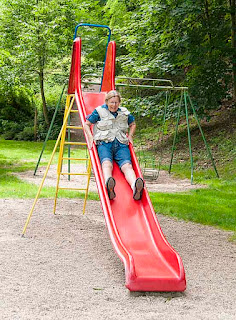
Hérisson is a delightful town located in the Allier department of the Auvergne region in central France. The river Aumance, a tributary of the Cher, flows through the town and eventually the Cher joins the River Loire and so to the Atlantic ocean.
Dominating Hérisson are the castle ruins, visible from almost everywhere in town. Built by the Dukes of Bourbon in the 14th century to oversee river traffic, the castle was first taken by Louis XI in the 15th century, changed hands again in the 17th century before finally being dismantled by Cardinal Mazarin and converted to a stone quarry.
At the time of our visit the castle was beginning to be restored but was still open to the public free of charge. Worth the climb to inspect the architectural detail and get some different views across town. Refurbishment is expected to be complete in about two years.
The literal translation of Hérisson is hedgehog which accounts for the city crest shown here. The low key gift shop in town has all manner of hedgehog centric souvenirs including some fine ceramic pieces.
Check out these other pictures.
.svg.png)








